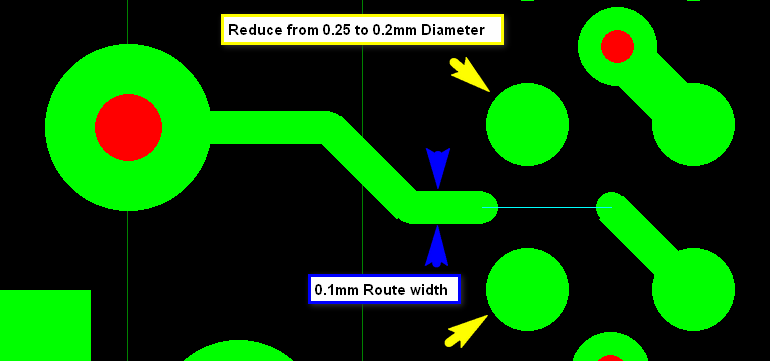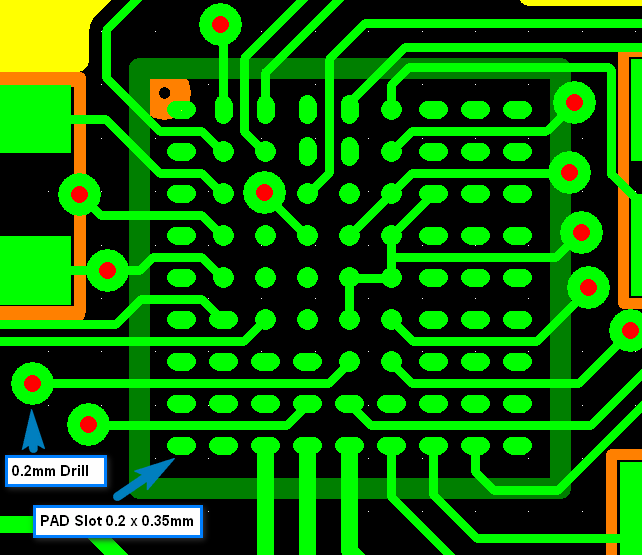Part Number: MSP432P401R
Hi,
i want to design the MSP432 with BGA Package and want to design the pcb with low cost.
Micro vias and via in pads are expensive and i need to get the route out of the package somehow.
On the datasheet the BGA Pad should have 0.25mm diameter and i design all BGA Pads with 0.25mm.
To avaoid micro vias and make the pcb cheaper, i want to route between the PADs and use normal vias outside the IC.
I dont need to route all Balls since i only use a few. My idea was to make some BGA Pads to 0.2mm so i can route with 0.1mm width
and have the pad to route spacing to 0.1mm.
My question is can i reduce Pads that i dont use, that are on the way that i want to route, from 0.25mm to 0.2mm?
The worst case is that the unused ball wont be connected with the 0.2mm PAD right?
But will the other BGA balls be connected?




